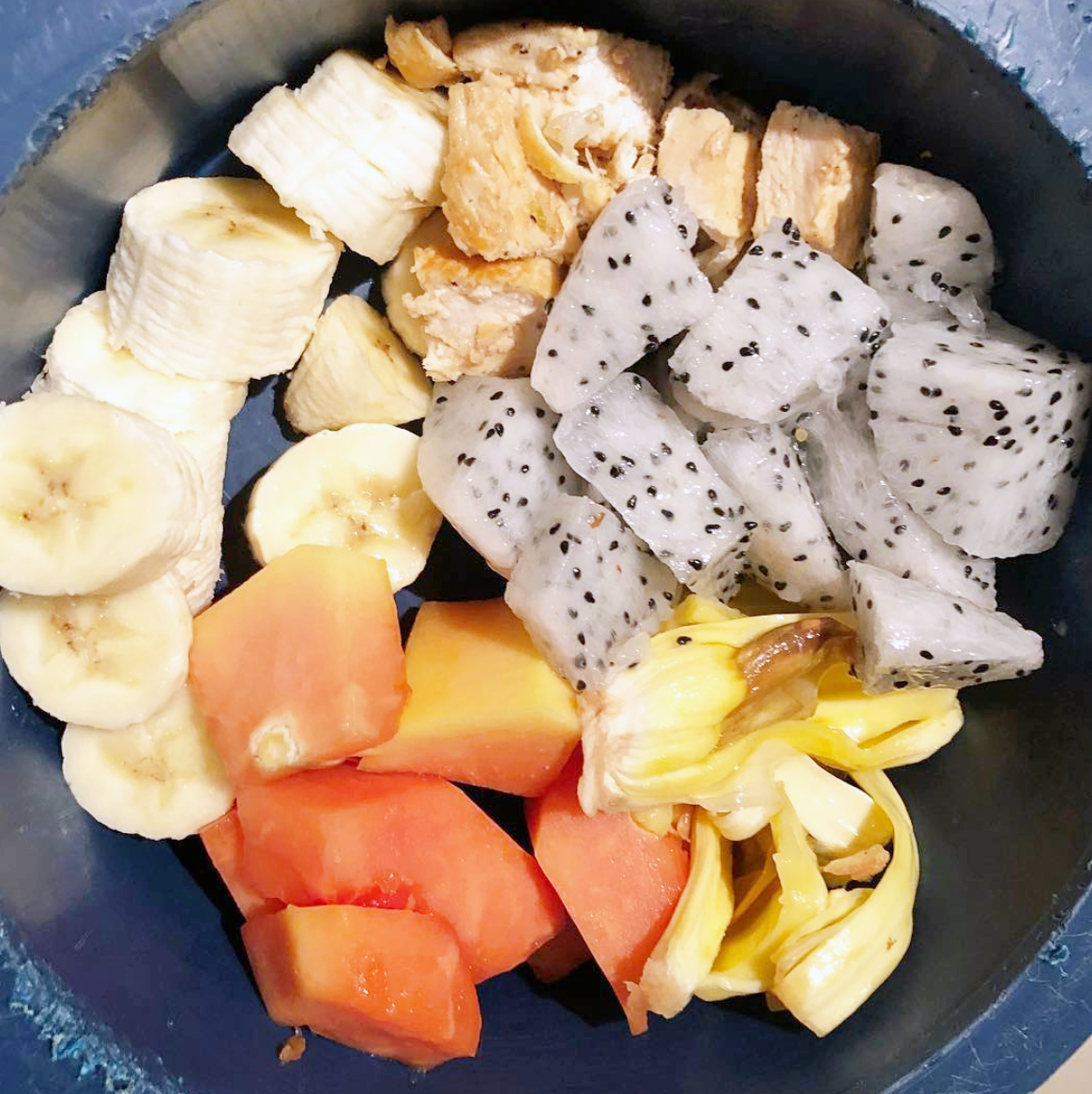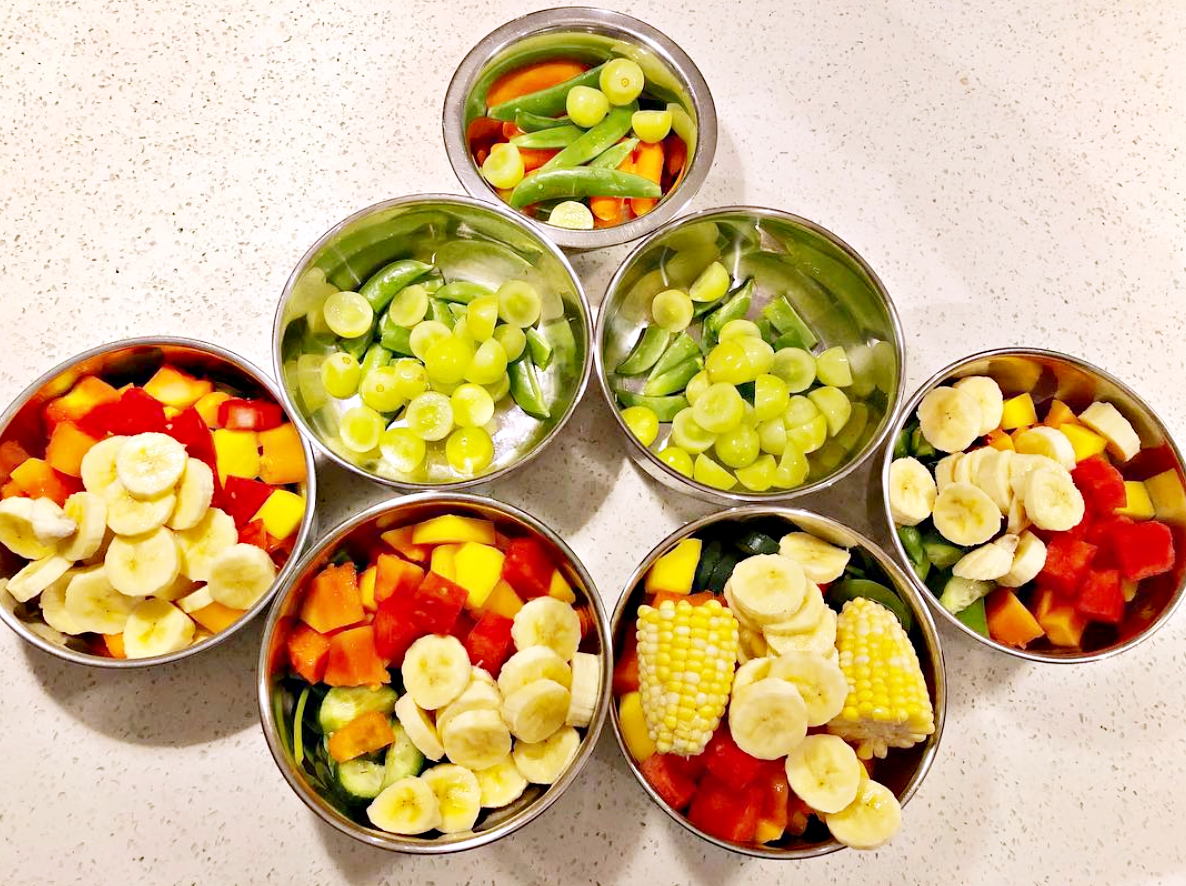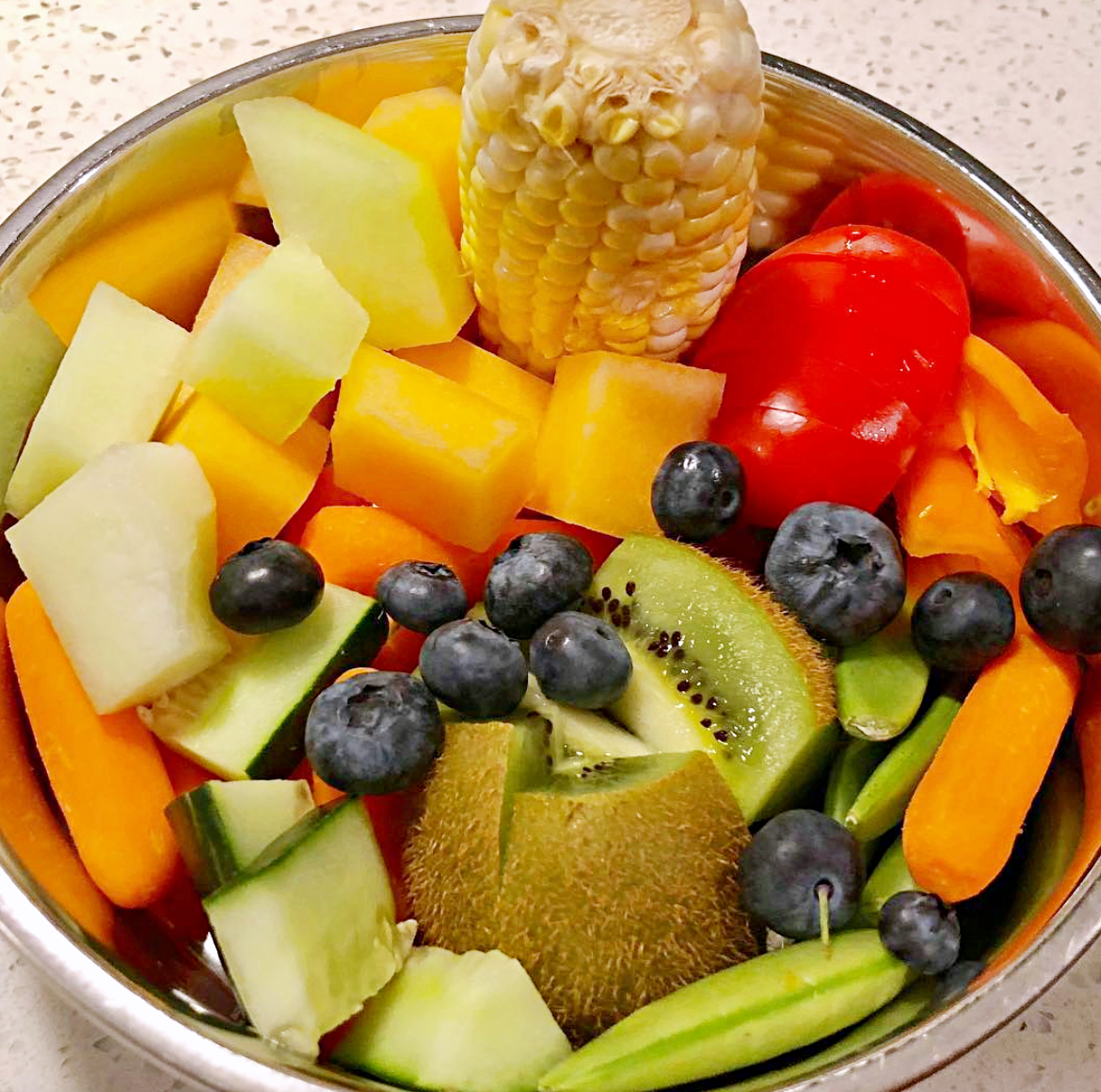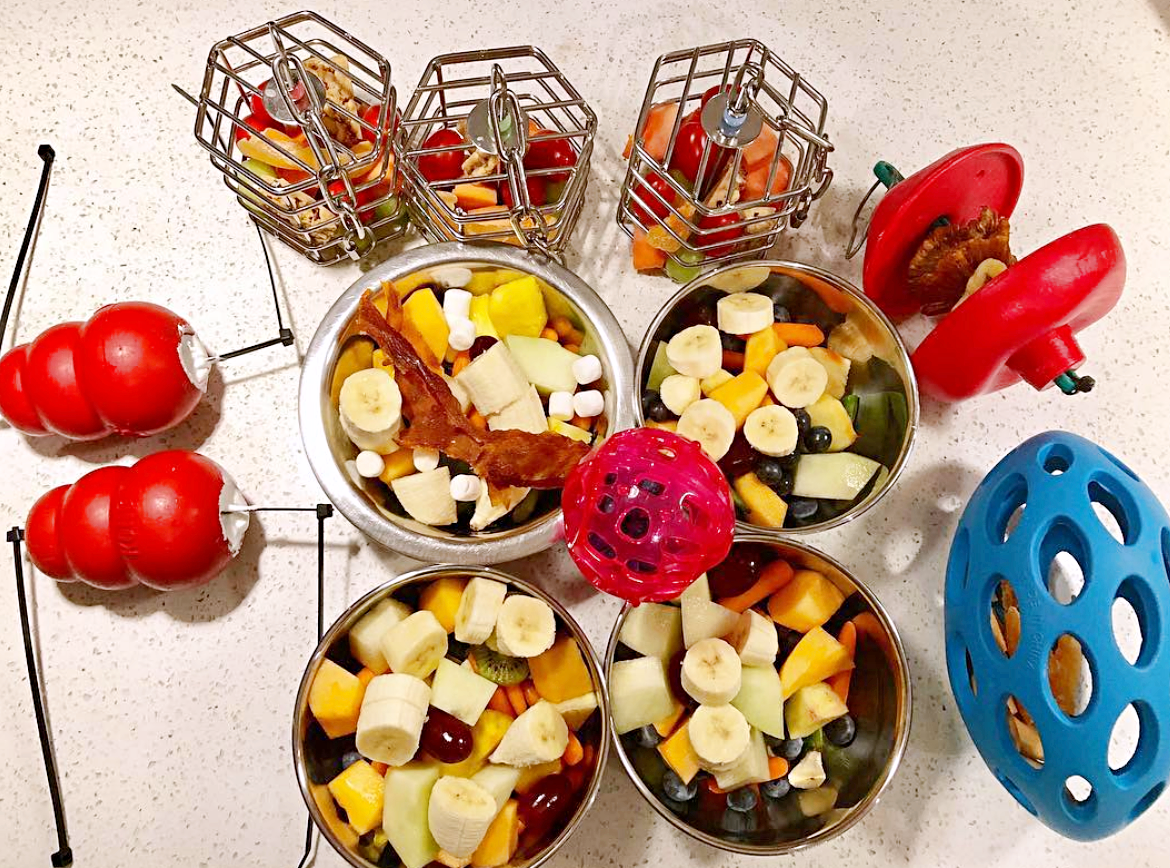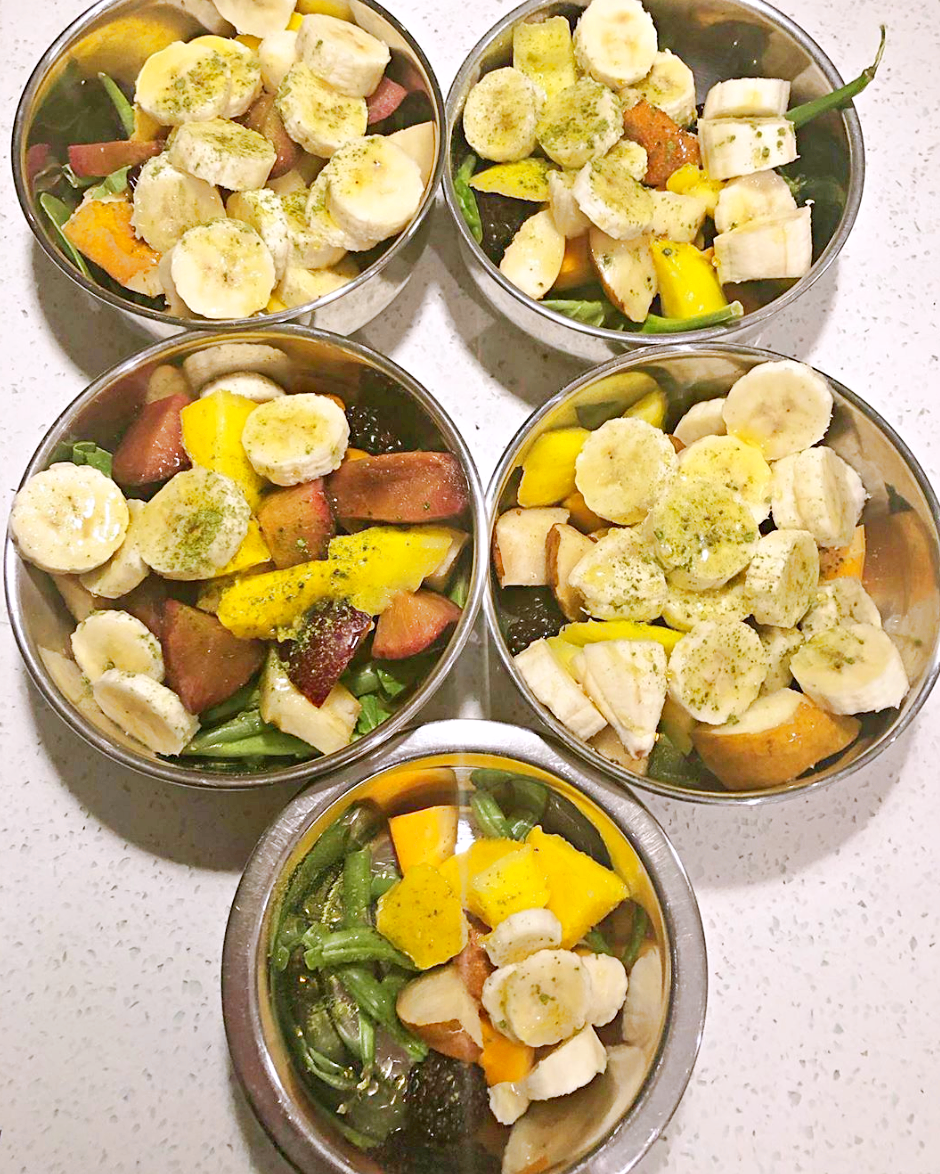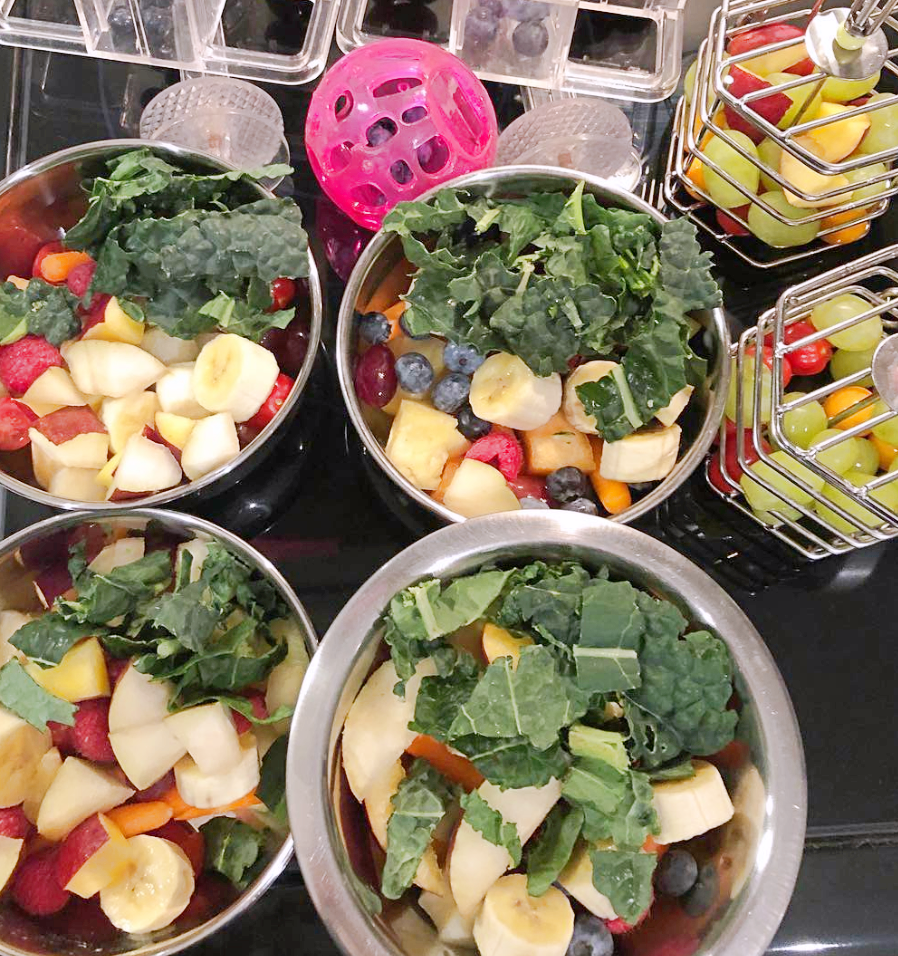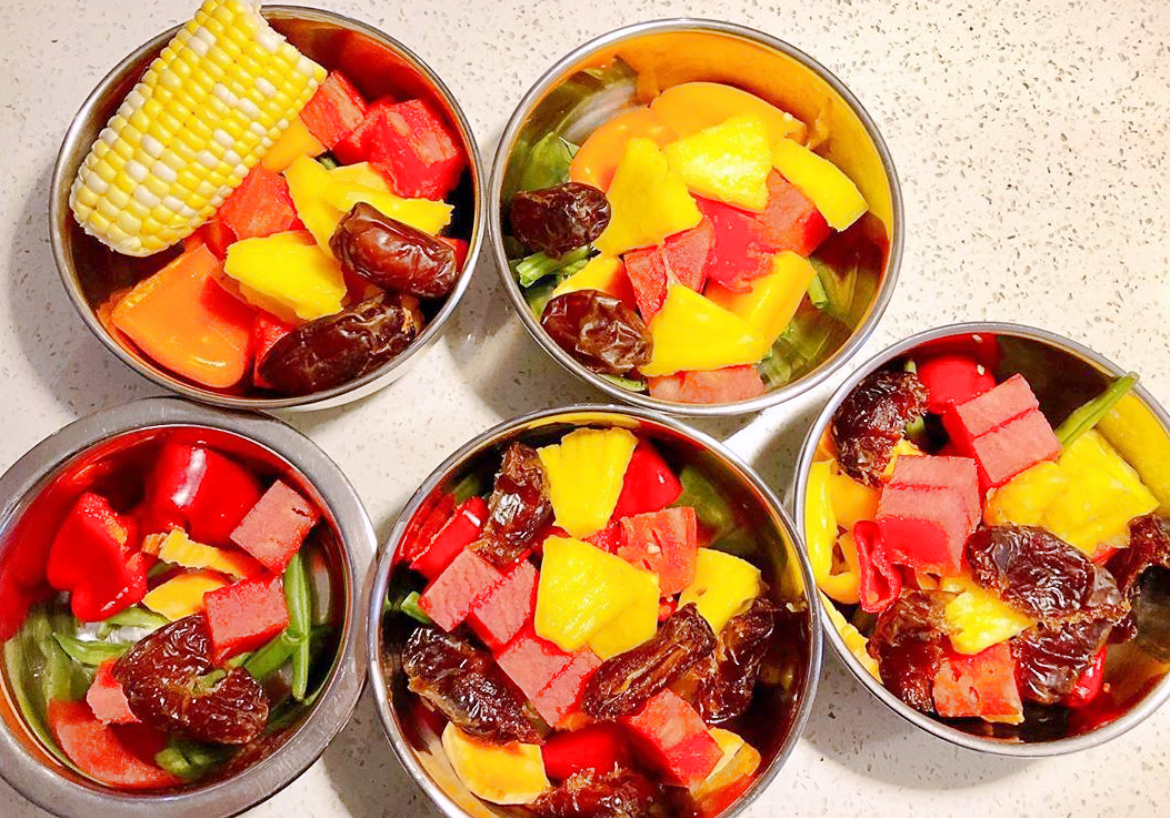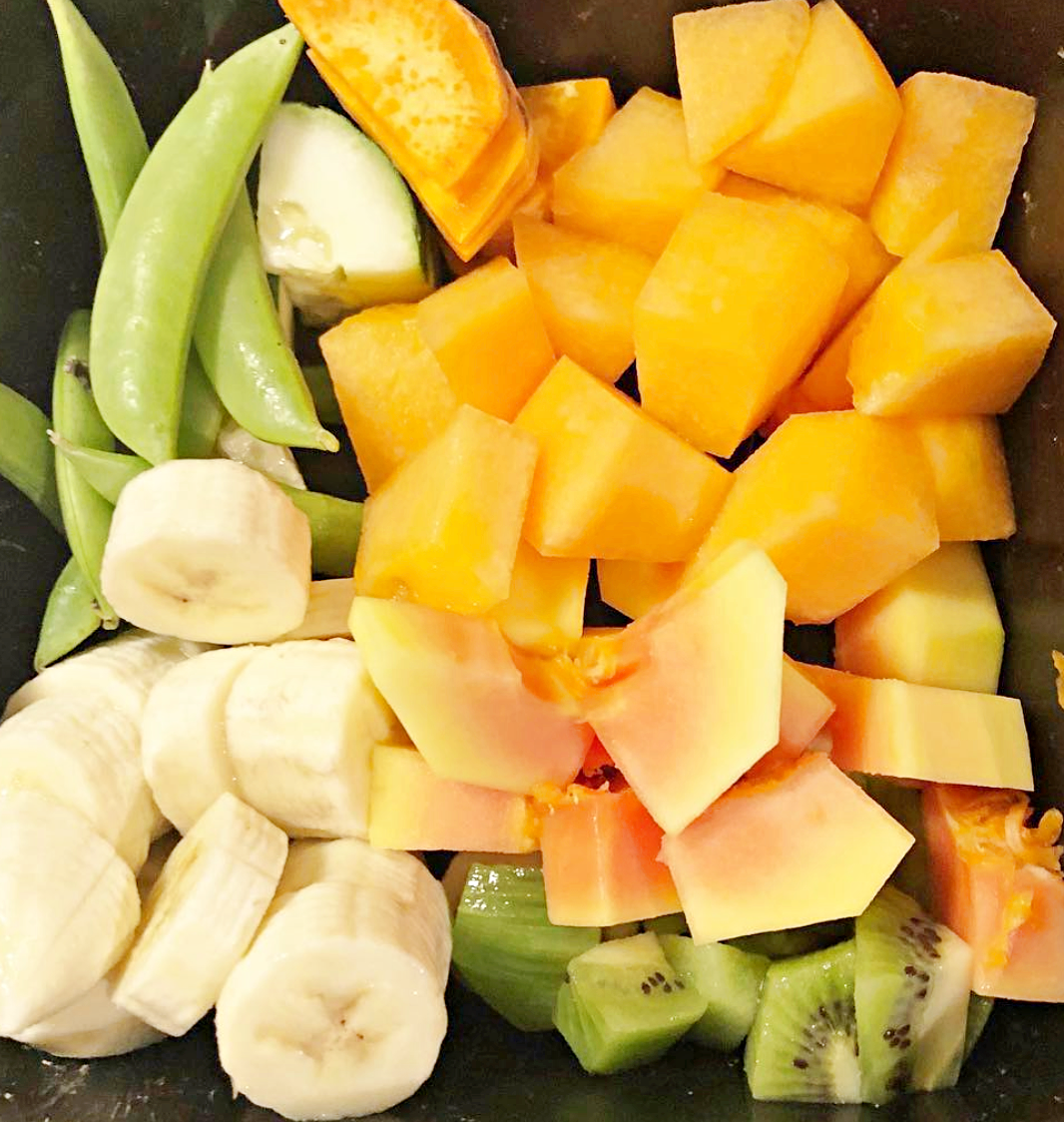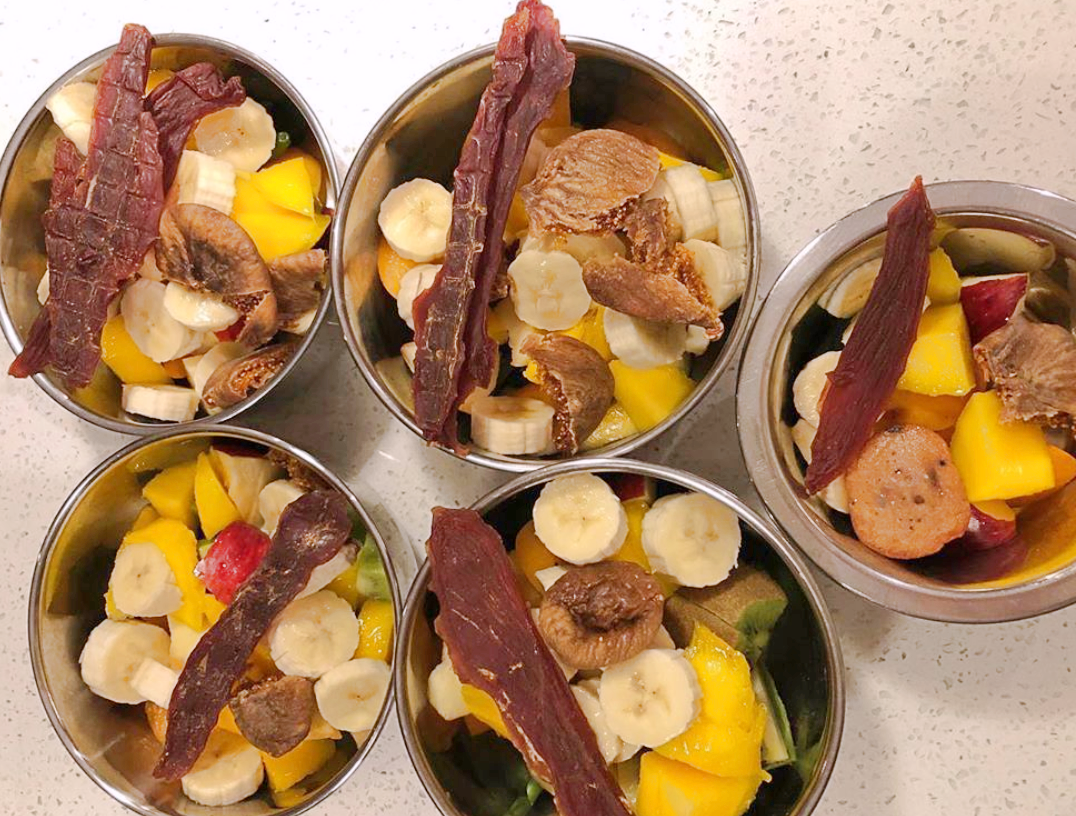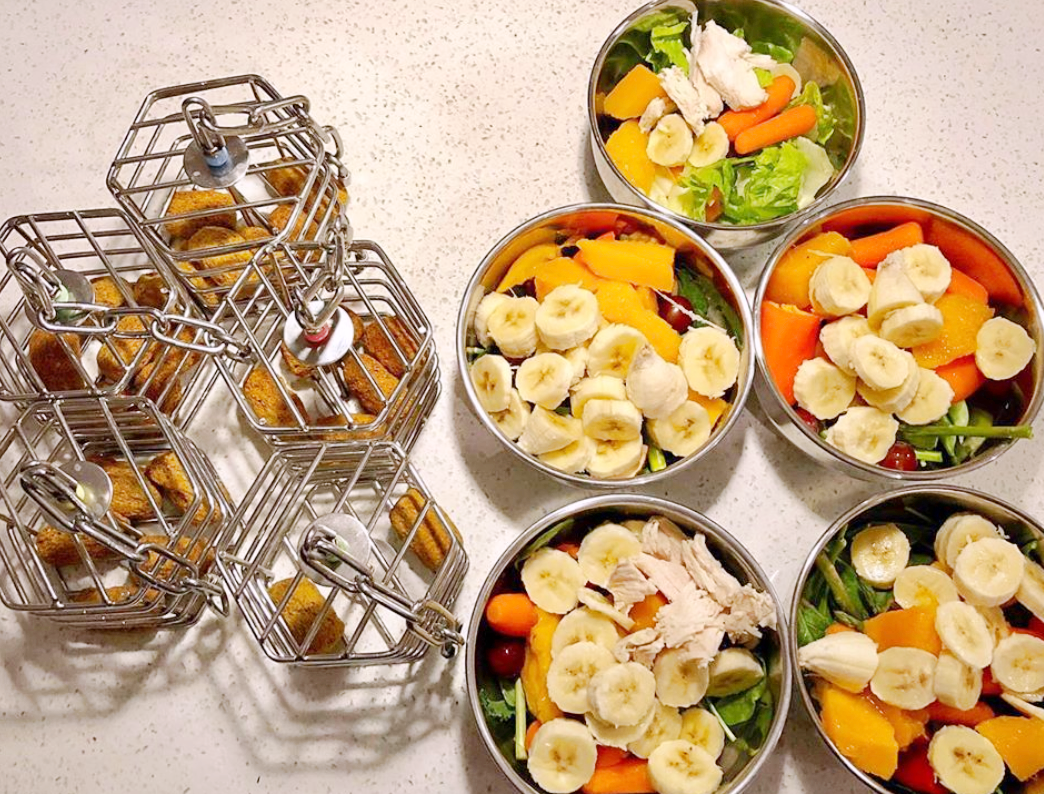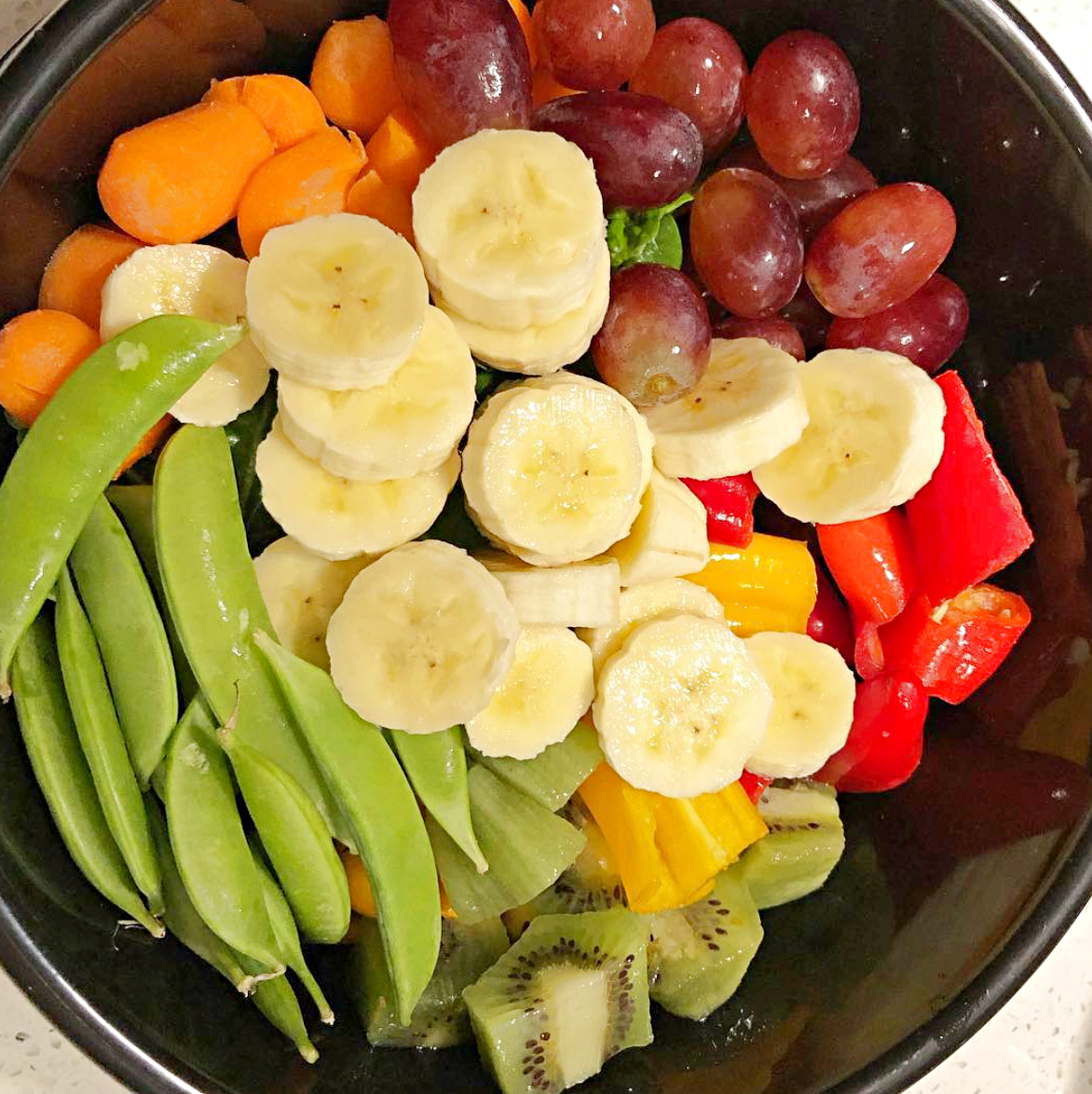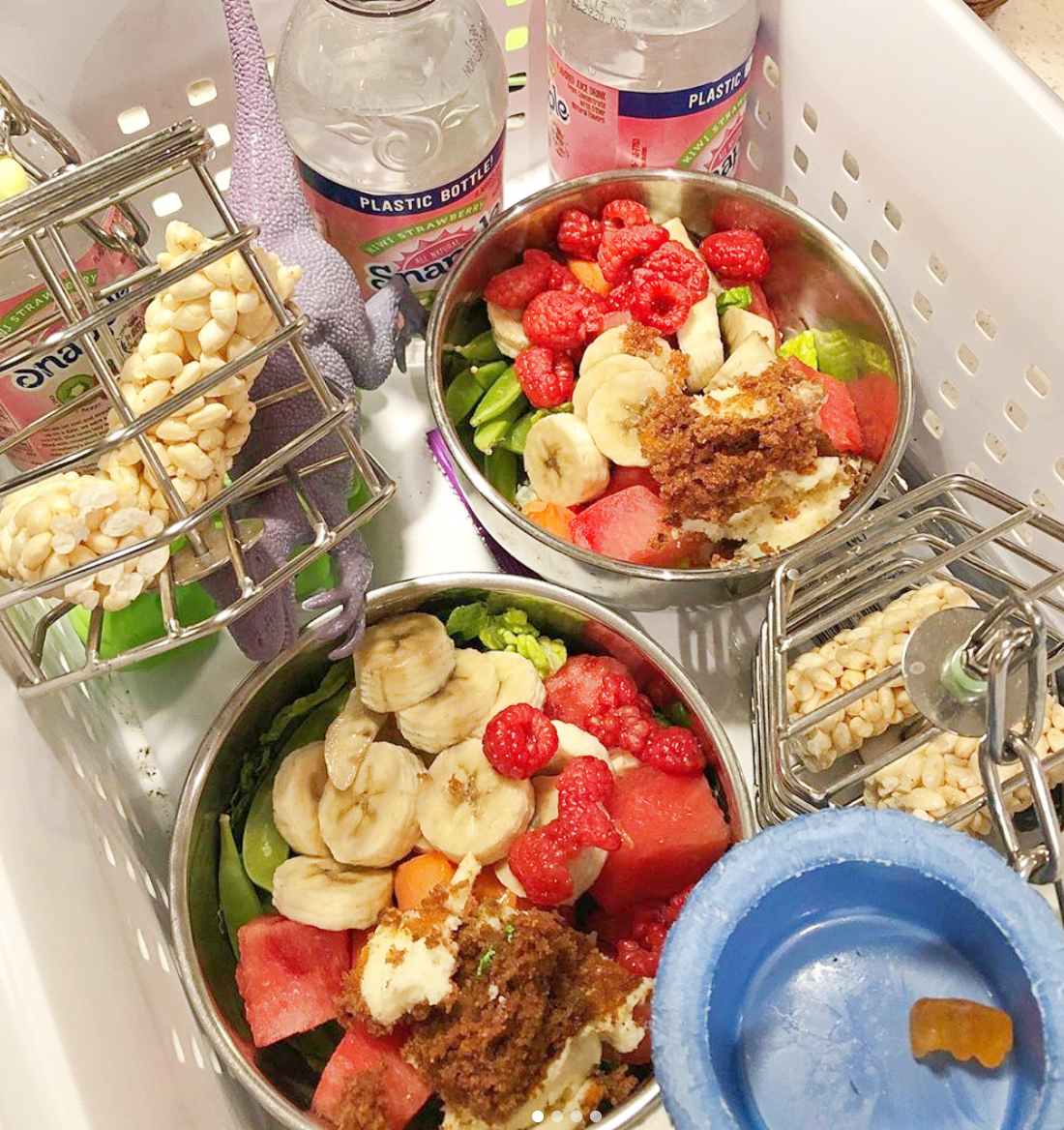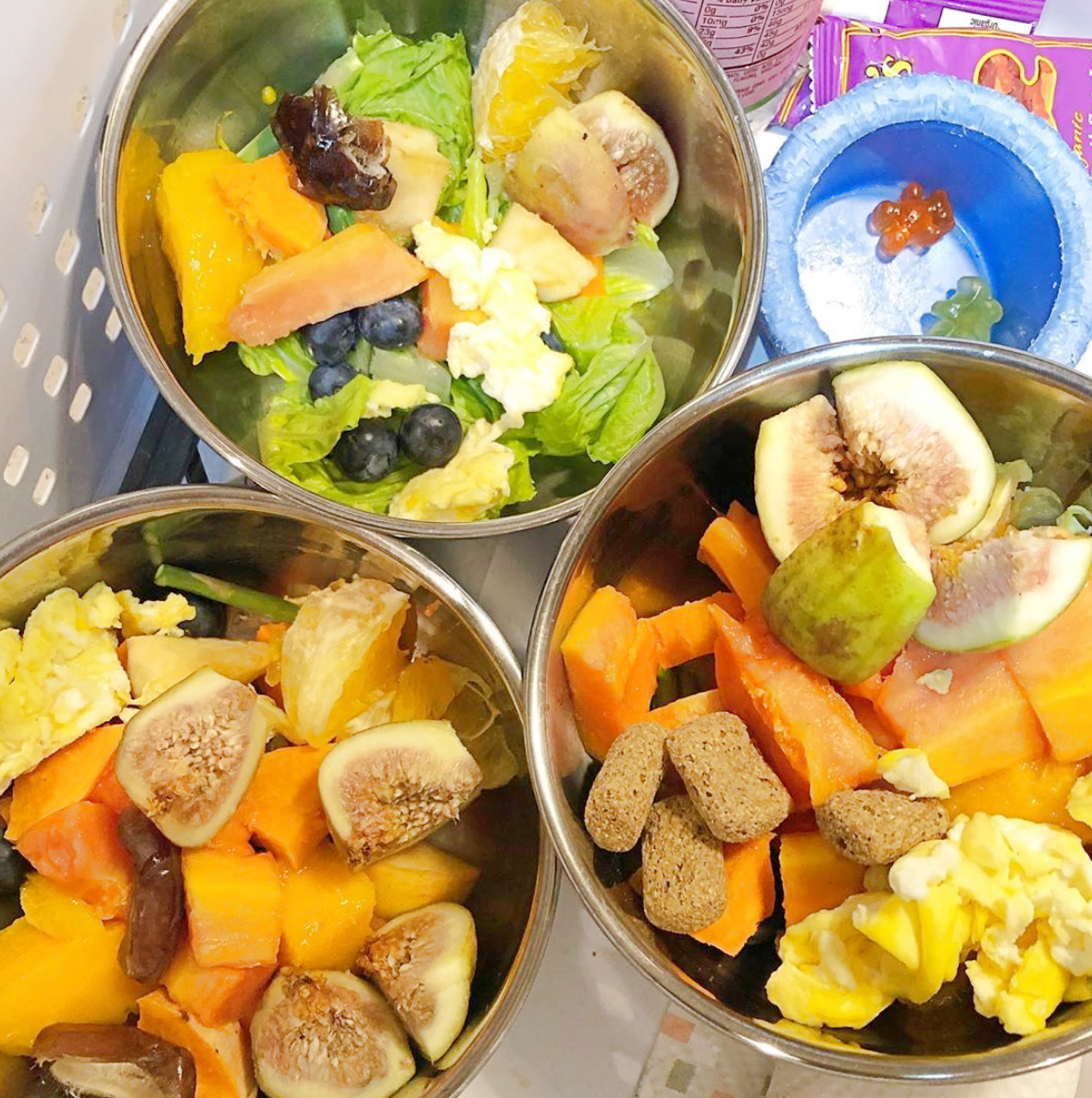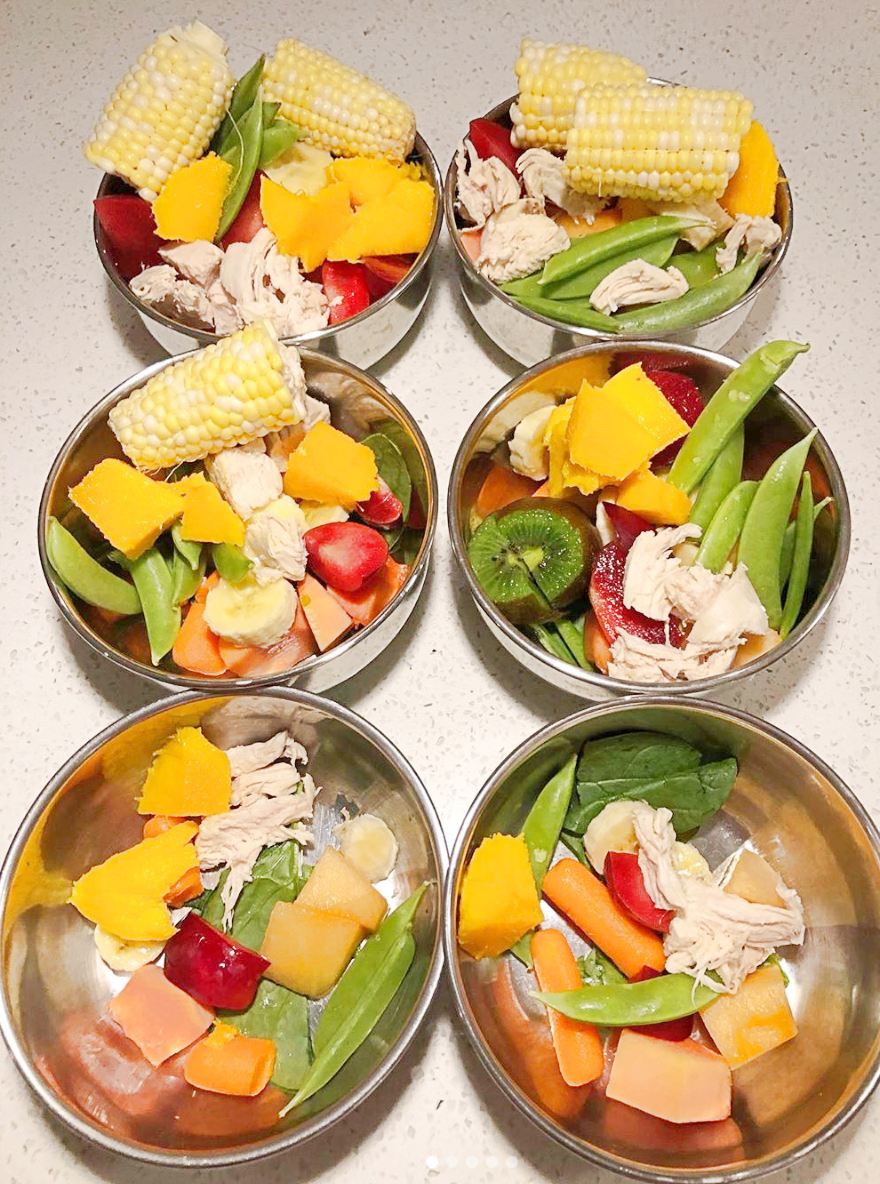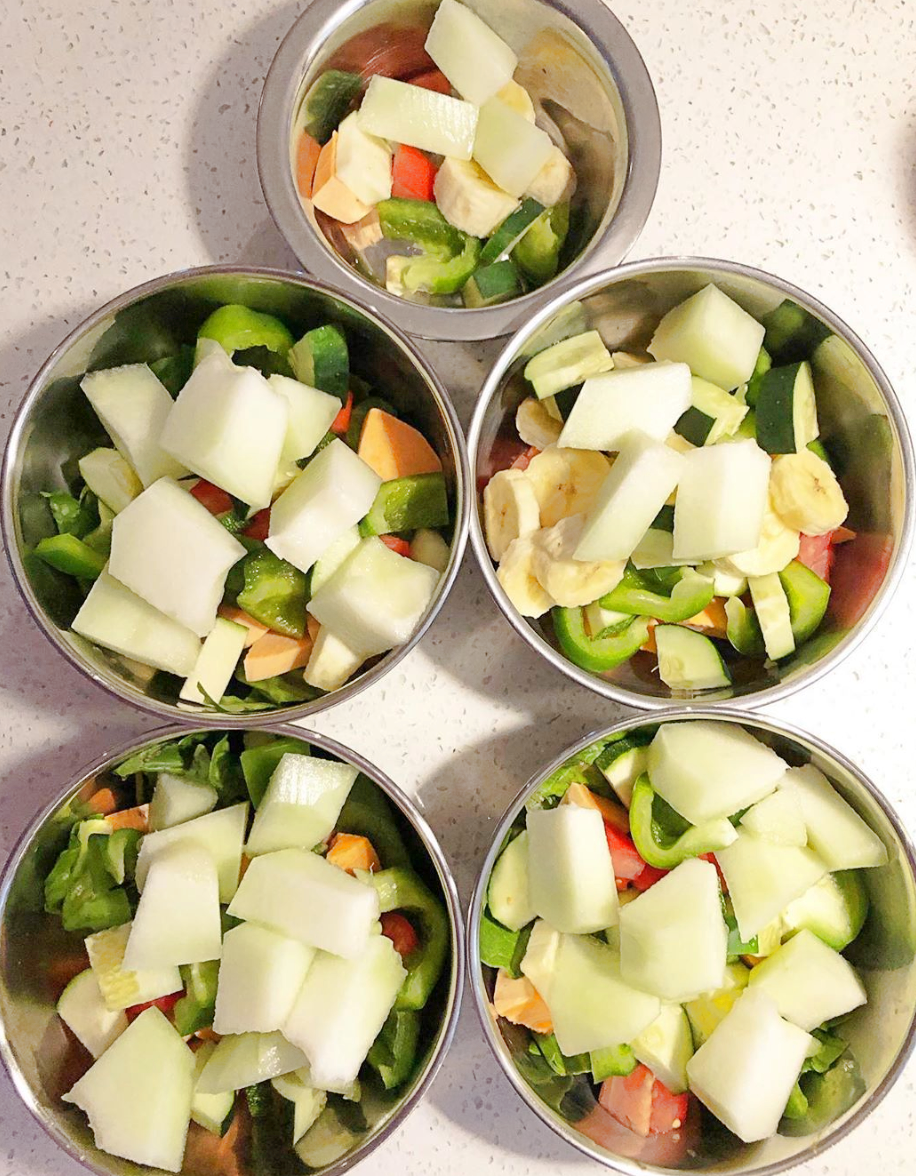the gourmet kinkajou diet
At Kinkatopia, we feed well-balanced diets and pride ourselves on nutrition by variety. We feed an 80% produce-based diet — fruits with a mix of vegetables. The remaining 20% consists of proteins, dry foods, nectars, and some treats. We also utilize foods to promote good dental hygiene and therefore offer tough vegetables, freeze-dried meats, and chew toys to strengthen and clean teeth.
Please follow us on Facebook and Instagram and use #gourmetkinkajou for food ideas.
Also, ask about our enrichment information so you can truly provide you kinkajous with stimulating dining ideas. In the wild, they spend their nights foraging for foods, so it is important to mirror their innate activities as best as we can.
There is a FAQ section after the charts.
The following is a list utilized (but not limited to) by Kinkatopia:
*** JICAMA WARNING: Must be peeled. The skin is toxic.
*I personally avoid red meats, as they can be hard to digest.
Also, meats can be given in jerky form, which is great for teeth!
HEALTHY TREAT IDEAS
Kinkatopia has a growing healthy- and treat-based recipe collection online! With password access, you have unlimited entry to the online database. The collection is added to regularly so remember to keep visiting for new food ideas for your kinks - and mammals of similar diet.
We also have a hard copy available for purchase! Click the above link for details!
FAQ
1. How much should I feed my kinkajou?
This is a popular question, but it is also specific to the kinkajou. Remember, kinkajous are derived from carnivores and have a short intestinal tract. They also have a fast metabolism and high energy. If using the suggested diet above, I would suggest 1.5-2 cups of food per adult kinkajou. Babies may eat slightly less, so I would suggest 1-1.5 cups food, cut up.
2. Is my kinkajou too thin?
Please see above about metabolism (No. 1). Some kinks may need more food or foods higher in fat to keep weight on. Also, intact kinkajous tend to be leaner in build. (Ideally one would spay/neuter, so you’ll see your kink fill out.) Remember, kinkajous come in many different sizes, contingent on their regional locale in South and Central America. They can range in weight averaging 4-6 pounds typically. That being said, I’ve seen healthy, smaller kinks weigh as little as 3 pounds and bigger kinks weigh as much as 10. These are what we would call greater and lesser kinkajous. Is your kinkajou eating? Are its bones protruding? Could my kink be ill? These are questions to ask yourself if you think you kink is too thin. Loss in weight can also be a sign of illness. If you are feeding the recommended diet and amount and your kinkajous is consuming its food, you should have nothing to worry about.
3. Is my kinkajou overweight?
No one asks this, but they should. Please see above about weight range (No. 2). An overweight kinkajou can suffer health issues and even have a shorter life. Because they have a sweet tooth, they are prone to obesity. Not allowing your kinkajou enough space for an enclosure or enough “out time” for activity can also promote obesity. When it comes to being overweight, one needs to look at build. A kinkajou should not have rolls in their forehead, neck, back, etc. This is an obvious sign that many people disregard and allude to it being “cute.” A spayed or neutered kink may have some skin that hangs down around the stomach. This is ok, but evaluate: is it skin or fat? How is their activity level? A kinkajou is typically not lazy. How is their agility? Are they struggling to pull themselves up onto things? Having difficulties hanging from their tails? Is it grooming itself? Overweight kinks need more assistance when it comes to bathing. Are their nails filed down from the weight their body is putting on their paws? If you are answering “yes” to any of these questions, please consider putting your Kinkajou on a diet.
4. Bottle-feeding: How much do I feed? What do I feed? When do I wean?
First, please consult your breeder. I only have my experience to share, which may be different than the protocol they have a baby on. For a 4-week old baby — I started feeding 10cc of formula every 4 hours. They are not drinking water; they get hydrated from the formula mixture. Around 6 weeks, I lengthened the time between feedings and started to incorporate very soft foods: banana, blueberries, cooked carrots, etc. Mashed items are good to start. By 8 weeks, he was entirely off the formula.
Formula make up: kitten formula, banana baby food, baby cereal. (Why kitten? See No. 7.)
5. How many times a night should I feed my adult kinkajou?
I provide my kinks with a snack, when they first wake up. Then I do their main feeding around 11 p.m. They are typically hungry when they first wake up, so I suggest offering foods throughout.
6. Controversial foods: strawberries, avocado, citrus…
Strawberries: Just no. Kinkajous can be allergic and have troubles processing the seeds. Do not risk it. Do not feed your kinkajou strawberries.
Avocado: I would not suggest feeding the skins, however it is fine in moderation.
Citrus: Feed in moderation. I have never had an issue. I will say that it will promote a wet BM, so be aware.
Lemon Grass: I know of one case where an allergic reaction occurred — I suggest avoiding it.
Chocolate: Never offer straight chocolate. It’s unhealthy and toxic for many animals. That being said, a little will not harm so do not panic. I don’t offer chocolate, but do not panic if they have a little accidentally.
7. What dry food should I use?
Above anything use a dry primate diet, aka monkey biscuits. These are great for dental health and provide a kink with extra nutrients. Exotic animals should have an exotic dry food, if you choose to use one. I do not recommend domestic dry foods for kinkajous, but if you must — a high-quality dry cat food. Again, kinks come from carnivores, they are also nocturnal which means they need taurine for their eyes. Dry cat food supports both of these physiological needs.
8. What else can I add to my kinkajou’s diet to promote overall good health?
You can use: moringa, bee pollen, colloidal silver, raw honey, CBD, multivitamin, black strap molasses, wheat bran, guar gum, coconut oil, etc.
9. Should I pit food items for my kinkajous?
It’s contingent on the kink. Some I trust, so I do not. I have had a kink swallow a cherry pit before. Now, in the wild they probably consume pits and seeds and naturally pass them. I lean on this; however, I no longer risk it.
10. What can I give my kinkajou to help it relax?
CBD is great, and should be given regularly. Contact us for more details regarding CBD!! Rescue Remedy is another natural option to help with periods of anxiety.
11. What monkey biscuits do we use?
We use Zupreem dry primate diet!











